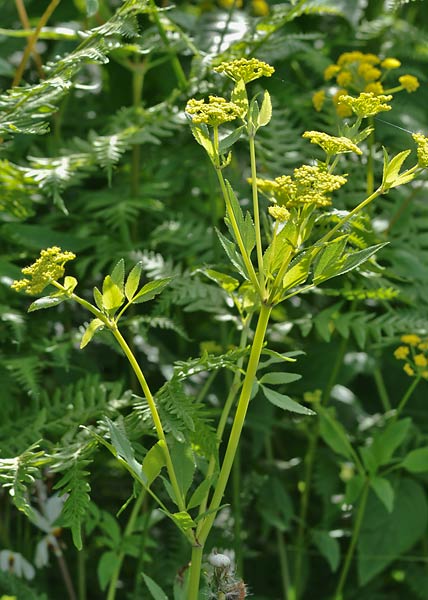
Date: May 19, 2010. Location: Rochester Cemetery (map)
| Classification Hierarchy | |
| Kingdom | Plantae |
| Subkingdom | Tracheophyta |
| Superdivision | Spermatophyta |
| Division | Magnoliophyta |
| Class | Magnoliopsida |
| Subclass | Rosidae |
| Order | Apiales |
| Family | Apiaceae |
| Genus | Zizia |
| Species | Zizia aurea |

Date: May 19, 2010. Location: Rochester Cemetery (map)
Scientific Name: Zizia aurea (Zizia in honor of botanist Johann Baptist Ziz; aurea [Lat] Golden)
Common Name: Golden Alexanders (etymology [Lat] certain herbs of the carrot family)
Origin: Native
Notes: found in moist wooded areas, floodplains, Prairie remnants. It prefers sunny areas with wet to mesic soils.
Additional references: 1, 2, 3, 4, 5, 6, 7, 8, 9.
Flowers: small, yellow, in compound umbels, bloom in late May. The central flower in the umbellets is unstalked, the others are born on secondary rays (pedicels). Fruit; oblong - somewhat flattened, wingless.
Leaves: basal leaves ternately decompound with 5-9 leaflets, cauline leaves alternate, leaves divided into three leaflets, lower leaves are sometimes further divided into three; leaflets lanceolate, margins toothed (serrate,serrulate).
Stems: The plant usually stands 1 to 3 feet tall on glabrous occasionally branched stems.
Glossary: Botanical Terms pdf

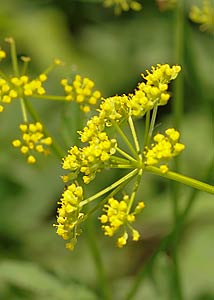
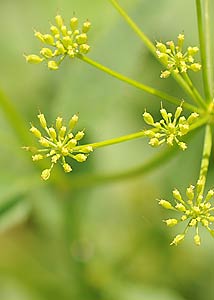
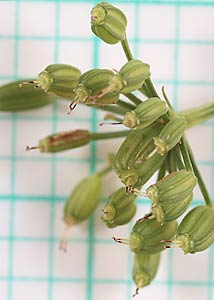
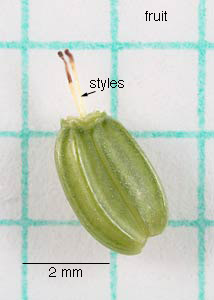
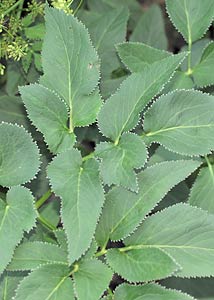
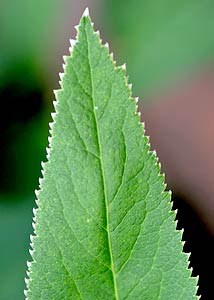

Comments: In addition to Zizia aurea, there are at least three other plants in this area with small yellow flowers in compound umbels. The most common of these is the invasive plant Pastinaca sativa that is often seen in abundance along road sides and other disturbed areas. Another member of the genus Zizia is Z. aptera which has only been reported in a few of Iowa's northern counties. Z. aptera has heart shaped basal leaves. Taenidia integerrima and Thaspium barbinode are also similiar in appearance. The fruit and leaf anatomy of each plant is sufficiently distinctive to tell the four plants apart.